In the middle of Sydney's west-suburban Auburn, primary school children build shelters out of plastic sheets and cardboard.
They are learning what life is like in a refugee camp.
For the rest of June, the public, professionals and primary school students are invited to take part in the simulated camp designed by local refugees who lived in camps.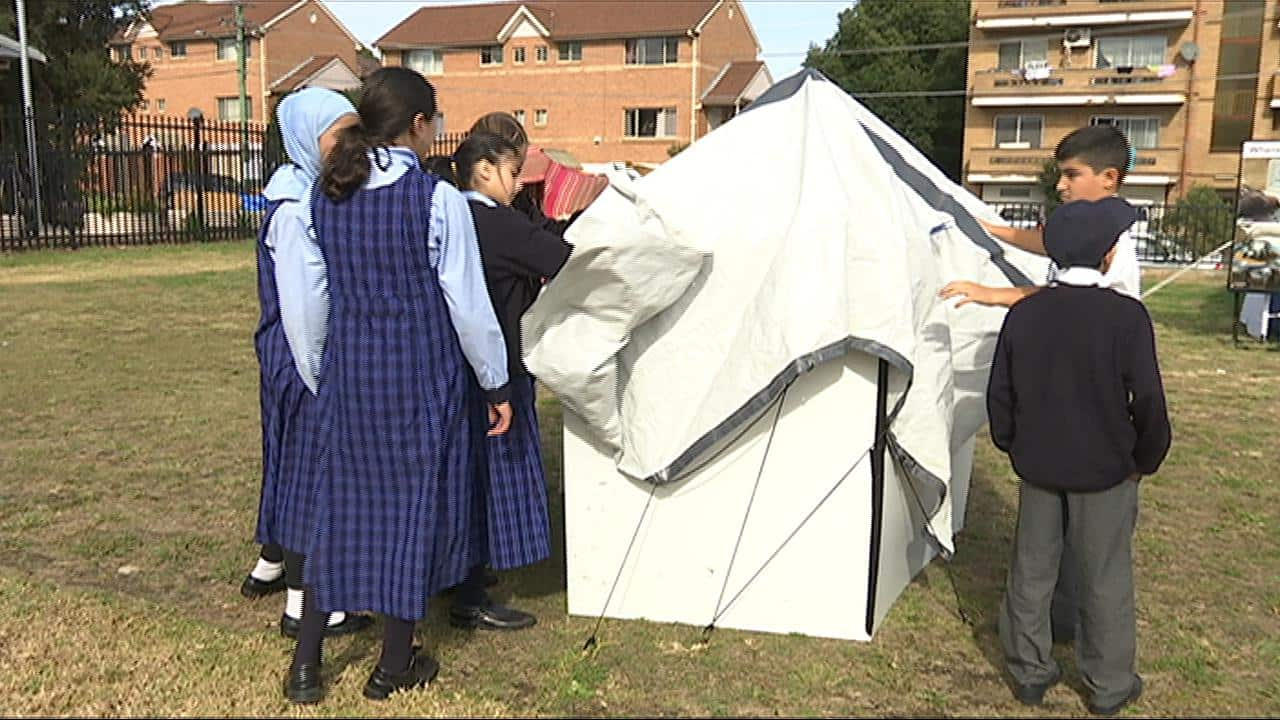 Tour guide Marie Sesay fled Sierra Leone with her family when she was a teenager.
Tour guide Marie Sesay fled Sierra Leone with her family when she was a teenager.

Children build a shelter at the interactive refugee camp learning experience in Auburn (SBS) Source: SBS
"Children my age were getting taken as sex slaves, and then my parents decided it was not safe anymore to live [there], so we moved to a neighbouring country called Guinea." she said.
Her parents took her and her five siblings to the Forecariah camp, near the border with Sierra Leone.
She said life there was difficult.
"It was unsafe, there wasn't enough food," she said. "Some nights, we had to go without food."
"Poor sanitation was everywhere. It wasn't really the best place to live or have your kids live in."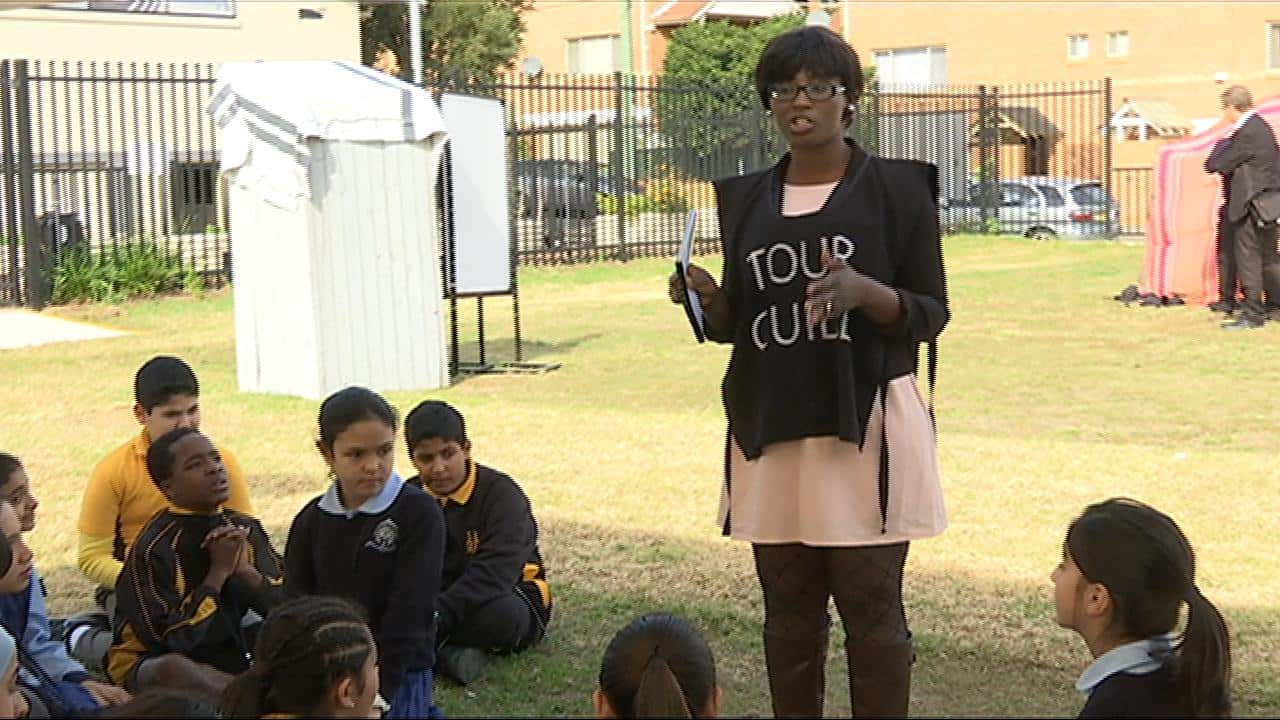 The Office of the United Nations High Commissioner for Refugees (UNHCR) estimated about a quarter of the world's refugees lived in camps.
The Office of the United Nations High Commissioner for Refugees (UNHCR) estimated about a quarter of the world's refugees lived in camps.

Tour guide and Sierra Leone refugee, Marie Sesay, shares her story with primary school students. (SBS) Source: SBS
Some camps around the world accommodated as few as 200 people. Others looked after as many as 400,000.
The Auburn City Council's Adama Kamara said many refugees who came to Australia started their new lives in this Sydney suburb.
The Auburn local government area had the highest number of humanitarian intakes in New South Wales per capita.
"Whilst it's diffcult for them, they're fortunate to be in Australia and be able to move on with their lives but they don't want to forget what's happened to them, because that's what gives them strength and resilience. But they also want others to understand what life was like," she said.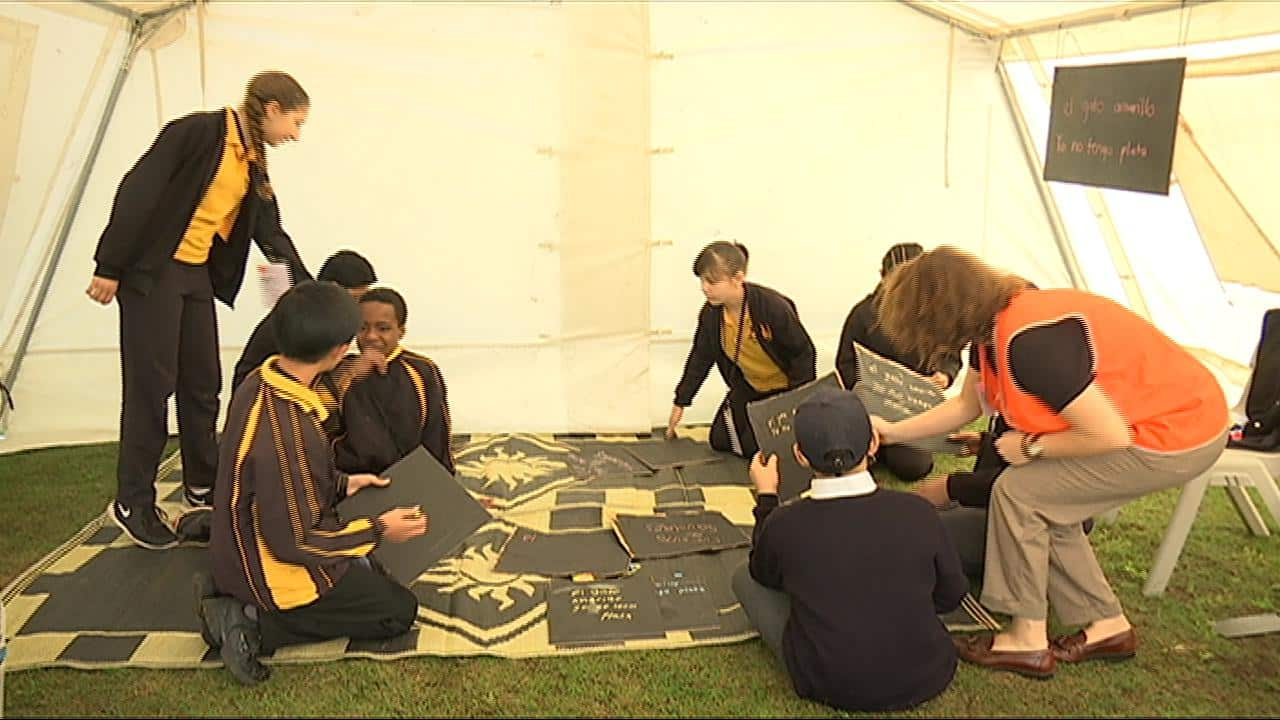 A number of tour guides who arrived in Australia as refugees take people through the simulated camp.
A number of tour guides who arrived in Australia as refugees take people through the simulated camp.

Students go to Spanish class. They must learn the language of the place they've sought refugee (SBS) Source: SBS
Participants learn about the complex living conditions within a camp.
Alexander Cuskelly, a student from nearby Hilltop Road Public School, said he was amazed by the practical problems refugees had to deal with.
"[It] just shows how hard they have to work just for the basic essentials like going to the toilet, getting some water, getting clothes and even getting medical advice." he said.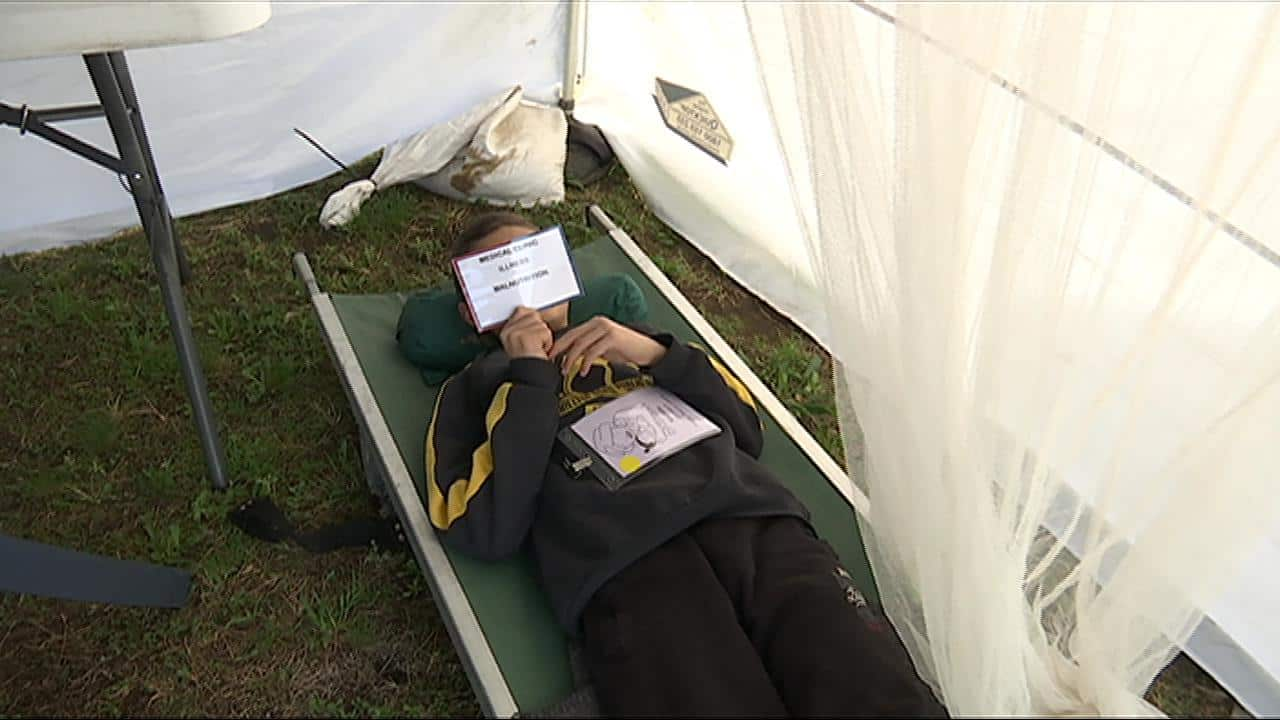 Fellow student Arunita Seth said she had not realised the struggles many refugees faced.
Fellow student Arunita Seth said she had not realised the struggles many refugees faced.

Student reads card about malnutrition and the symptoms many refugees suffer in camps. He is in the camp medical tent (SBS) Source: SBS
"I just thought that they were people who came to Australia...for their own personal reasons. I didn't actually know they actually went through so much before that." she said.
The UNHCR has provided hundreds of thousands of tents to refugees and internally displaced people all over the world.
The shelters can house up to 10 people and are designed to last about a year for families in emergency situations.
But for many, the temporary accommodation becomes more permanent.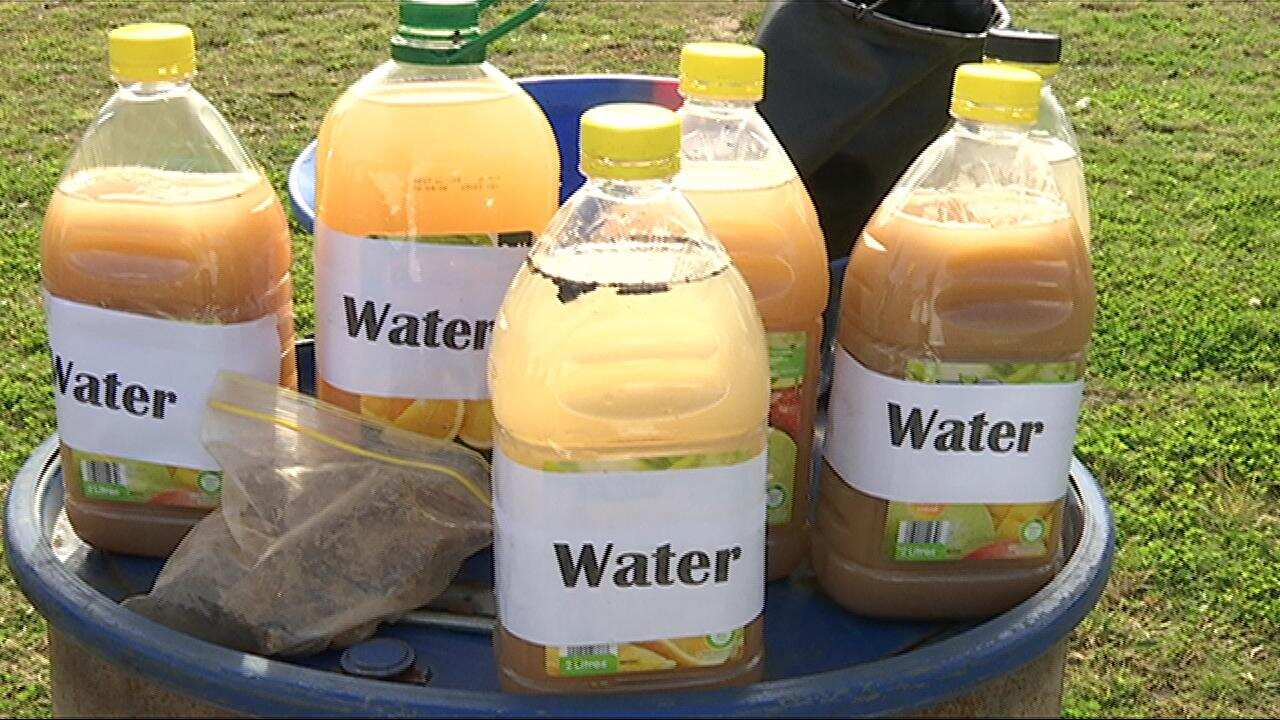 Marie Sesay said she lived in a tent for five years but said she was lucky.
Marie Sesay said she lived in a tent for five years but said she was lucky.

Dirty water - an example of what many refugees are forced to drink. Many refugees in camps rely on international aid. Supplies often run out, and many people must collect water from streams or wells in the area (SBS) Source: SBS
"Some people wait in the camp a minimum of 17 years, so you never know. It's just day in, day out, you just hope for the best, really."
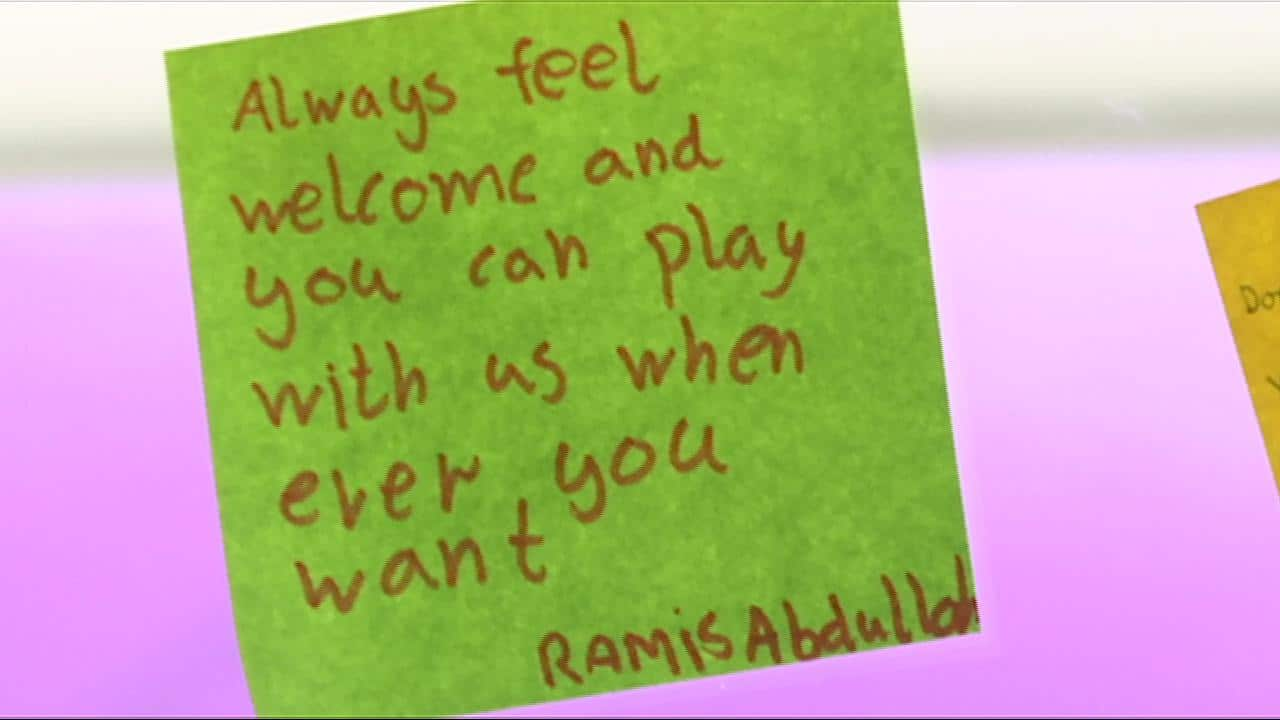
Primary school student, Ramis Abdullah leaves a message for refugees (SBS) Source: SBS
Share
